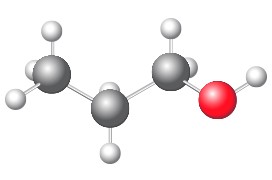2-Propanol
What Is 2-Propanol?
2-propanol is a flammable secondary alcohol with an isopropyl group linked to a hydroxyl group. Structurally, it is an isomer of 1-propanol and ethyl methyl ether.
Standard Oil first produced 2-propanol, also known as isopropyl alcohol, in 1920 by hydrating propene. Today, it is used to make industrial and household chemicals, including antiseptics, disinfectants, and detergents.
2-propanol and its metabolite, acetone, depress the central nervous system. Ingestion, inhalation, or skin absorption can cause poisoning. Poisoning symptoms include flushing, headache, dizziness, nausea, vomiting, anesthesia, hypothermia, low blood pressure, shock, respiratory depression, and coma.
Vapor from 2-propanol is denser than air and flammable. It is important to keep it away from heat and open flames. It is also a skin irritant, so protective gloves are recommended for handling.
Synonyms: Rubbing alcohol, propan-2-ol (IUPAC name), isopropyl alcohol, IPA, propyl alcohol, sec-propyl alcohol, s-propanol, iPrOH, i-PrOH, IpOH, dimethyl carbinol, and isopropanol. (IUPAC considers isopropanol incorrect because the hydrocarbon isopropane does not exist.)

Physical and Chemical Properties
| Property | Value | ||||
|---|---|---|---|---|---|
Molecular Weight | 60.10 g/mol | ||||
Density | 0.785 g/mL at 25°C | ||||
Boiling Point | 82ºC | ||||
Melting Point | -89.5ºC | ||||
Flash Point | 11.7ºC | ||||
Viscosity | 2.038 cP at 25ºC | ||||
Dielectric Constant | 20.18 at 20ºC | ||||
Dipole Moment | 1.560 | ||||
UV Cutoff | 210 nm | ||||
Refractive Index | 1.377 at 20ºC | ||||
Vapor Pressure | 33 mm Hg at 20°C | ||||
Vapor Density | 2.1 (vs. air) |
Uses
Solvent: Isopropyl alcohol dissolves many non-polar compounds. It evaporates quickly, leaves little to no trace compared to ethanol, and is relatively non-toxic. It is used as a cleaning fluid for oils, eyeglasses, electrical contacts, DVD and other optical disc lenses, and for removing thermal pastes.
Laboratory: Isopropyl alcohol (70% solution) is relatively non-toxic compared to formaldehyde and other preservatives. It is sometimes used to precipitate DNA for extractions.
Medical and Personal Care: Isopropyl alcohol (70% solution) is used for rubbing alcohol, hand sanitizer, and disinfecting pads. The solvent can also be used to help remove water to prevent swimmer's ear.
Automotive: Isopropyl alcohol helps solubilize water in gas-drying fuel additives so that it doesn’t separate and freeze. It can also remove brake fluid, serve as a de-icer, and be used as homemade windshield washer fluid.
Designations and Grades
| Property | Value | ||
|---|---|---|---|
CAS Number | 67-63-0 | ||
MDL Number | MFCD00011674 | ||
RIDAD /UN Number | UN 1219 3/PG 2 | ||
Beilstein Registry | 635639 | ||
EG/EC Number | 2006617 |
Grades
ACS, ACS Reagent, Certified ACS
Anhydrous/Dry/Extra Dry
Biochemical
Electronic/Semiconductor
FCC/NF/BP/EP/JP/USP
GC
Histological
HPLC Gradient
HPLC/UHPLC/UHPLC-UV
Laboratory/Technical
LC-MS, Ultra LC-MS
Molecular Biology
Pesticide Residue
Spectrophotometry
Trace Metals
A New Way to Shop for Chemicals
Conduct your search by drawing your molecule or uploading its chemical structure.
Chemical Safety at Your Fingertips
Locate a safety data sheet (SDS) for a particular chemical or catalog number.



